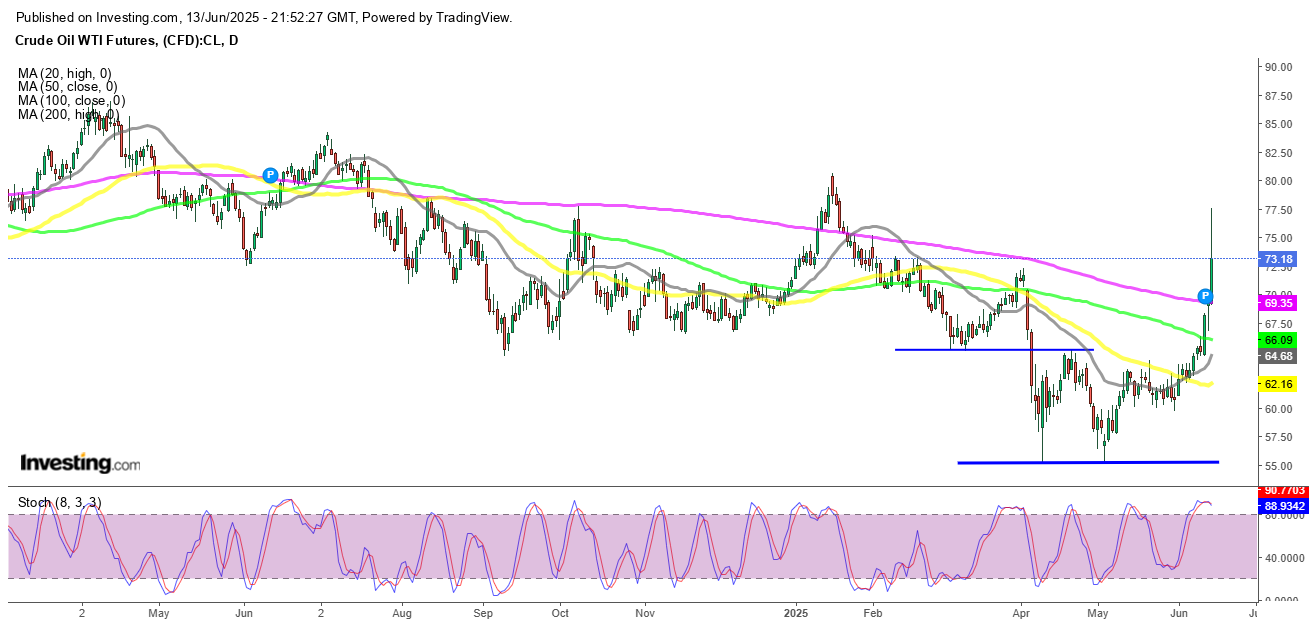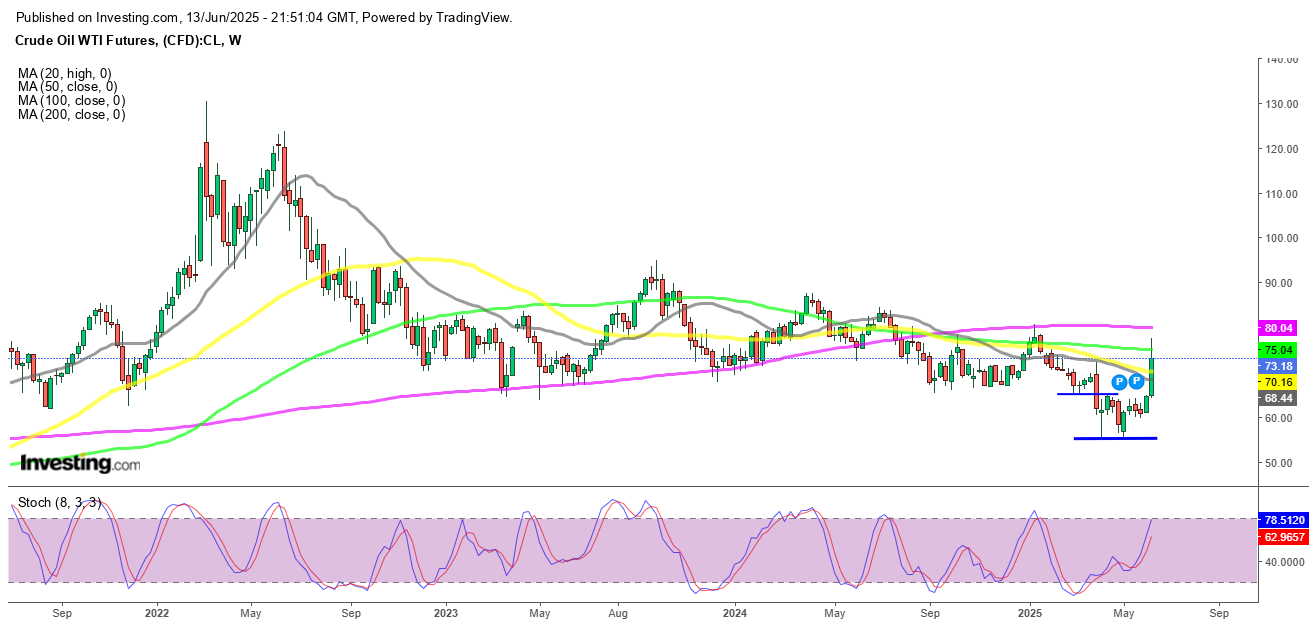
Quick overview
Oil prices swung wildly this week as geopolitical risk in the Middle East flared, sending crude prices sharply higher before retreating, with Monday’s open now hinging on further developments between Israel, Iran, and broader U.S. diplomatic signals.
Crude Oil Spikes Then Cools as Middle East Tensions Whipsaw Markets
Israel’s Strike Triggers Sharp Oil Rally
A volatile week in oil markets came to a dramatic climax on Friday after Israel launched an attack on Iranian targets, reigniting fears of a wider regional conflict. The sudden escalation sent WTI crude soaring from below $70 to as high as $77.60, breaching its 200-day simple moving average for the first time in months. That represented a gain of over $8 or roughly 12% intraday, a move echoed by Brent crude, which closed the day around $78.55 per barrel.
WTI Crude Chart Daily – The 200 SMA Is Broken
These rapid price surges were fueled by traders pricing in the risk of supply disruptions in the Strait of Hormuz—a critical oil transit chokepoint through which nearly 20% of global crude flows.
Trump’s Comments Provide Brief Reprieve
Earlier in the week, oil prices had started to recover from geopolitical pressure after President Donald Trump suggested the possibility of a new nuclear agreement with Iran, hinting at diplomacy rather than escalation. That briefly cooled market nerves and helped bring prices down. However, Friday’s Israeli strike quickly reversed those gains, restoring volatility to an already tense situation.
Friday Surge and Subsequent Pullback Caps Weekly Close
Despite the dramatic intraday rally, oil prices faded into the Friday close as traders began repositioning ahead of the weekend.
WTI crude settled at $73.18, off its high but still well above early-week levels.
Brent crude finished the week at $74.50, also down from its intraday peak.
Market watchers now await fresh headlines to determine Monday’s market tone.
Monday Gap Risk: Bullish or Bearish?
The outlook for crude oil remains deeply news-dependent. Should tensions ease over the weekend and diplomatic channels open, oil could face a sharp bearish gap when markets reopen, especially as underlying demand remains soft due to global economic concerns. On the other hand, if Iran retaliates or the crisis worsens, a bullish gap higher could materialize, potentially driving WTI toward $80 and beyond.
WTI Chart Weekly – Buyers Face the 200 SMA at $80
Analysts note that while fundamentals haven’t changed significantly, risk premium driven by geopolitical uncertainty is currently dominating price action. This dynamic is also evident in gold, which has seen increased safe-haven flows.
US WTI Crude Oil Live Chart
WTI
Related Articles
